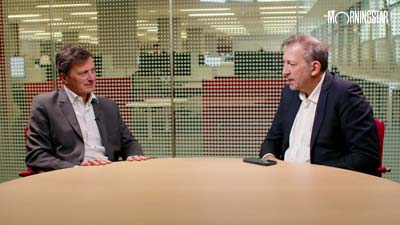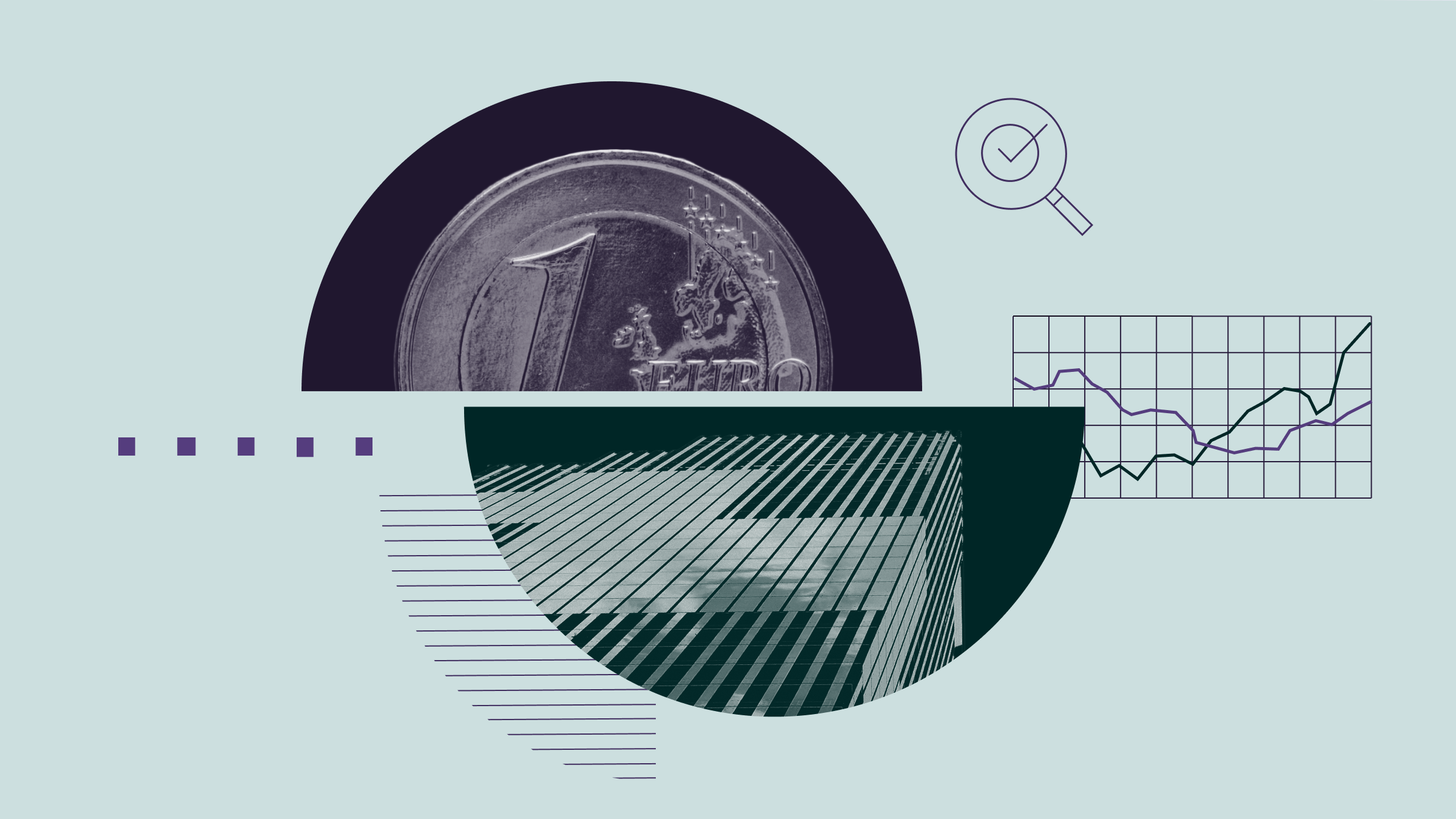TRANSCRIPT
Jason Stipp: I'm Jason Stipp for Morningstar. As we're putting 2015 into the books, we're already looking ahead to 2016 with our director of economic analysis Bob Johnson. He says there may be some surprises in store. He is here to explain.
Bob, thanks for joining me.
Bob Johnson: Great to be here today.
Stipp: Before we get to 2016, let's look at some of your predictions and forecasts for 2015. We did a similar video around this time last year. I want to hit on a few of the key themes. Last year you said that housing starts will improve in 2015, but not as much as the forecasters were expecting, the consensus. Were you right on that?
Johnson: Absolutely. People were expecting a 20% increase in housing starts from, round numbers, 1 million starts to 1.2 million, but we only got about half of that, to 1.1 million. It was clear they were wrong pretty quickly, pretty early in the year.
Stipp: Last year we already had seen energy sell off and oil sell-off, and you were predicting that we would see some rebound there. Clearly, that didn't happen this year.
Johnson: Absolutely did not happen. We missed that one by a country mile. We were most surprised probably at OPEC's reaction, and even in the U.S., where energy companies just didn't cut back producing.
Stipp: China was a big story in 2015. You said last year that China will slow, but it won't fall off a cliff. I think that we were in the ballpark there.
Johnson: China has certainly shifted what they are buying and what they care about, and that's probably more important than the growth rate, which we thought might slow a little bit. Again, I don't think they are going to fall apart, and I don't think they will next year, either, but their demand for commodities will still remain low.
Stipp: And lastly, your GDP forecast was more in the range of what it has been for a while. Others at this time last year were expecting GDP to come in much higher than it ended up.
Johnson: Everybody, including the Fed, thought we were going to reach this "escape velocity," and that somehow we are going to someday get to back to 3%-4% growth. Then we had one great quarter, and everybody thought, my goodness, this is it; we're back! But we said the fundamentals and the demographics of an aging population and slowing population growth are really holding things back, and that we'd be lucky to grow 2%-2.5% for the year, which is about what we'll end up doing.
Stipp: Let's take a look now at 2016, and let's start with GDP. Some of those forecasters last year who were saying 3%-plus have pulled that in a little bit, but they are still a little too high, you think.
Johnson: They are being a little aggressive. The consensus is probably 2.6%-2.7% for GDP growth next year. Again, I'm sticking with my 2%-2.5% range, and I think we'll likely end up pretty much in the middle of that range for the year ahead.
Stipp: Second prediction for 2016 is that inflation will heat up faster than some market watchers are expecting.
Johnson: Absolutely. We've got core inflation--that's excluding food and energy--at the 2% range right at this moment. Because of the labor shortage issues that we've talked about, services inflation especially will continue to move upward. At the same time, after last year's bad call on energy I'm a little bit gun-shy there, but I really don't think energy prices can go down a lot more from here. And the fact that they don't go down any more--even if they stay where they are right now--by next December that means they won't be a big detractor from the inflation rate. So, you'll see the underlying core rates move up, which I think are moving a little bit higher because of the labor shortage issue. I'm thinking, with no real problem, we'll reach 2.5% inflation. If we have a crop shortage or crop failure somewhere or a big geopolitical event, it's not out of the question to see 3% or more on inflation.
Stipp: We're going to be lapping some of those low energy prices next year. Even if they don't go up, you're not going to get that benefit on inflation looking ahead.
Inflation and interest rates tend to go together. Where are you thinking interest rates are going to come in, and how is that different than the consensus?
Johnson: I think they will move higher along with the inflation rate, and I think that they will probably go hand in glove on that. I'm thinking we'll get to a 10-year Treasury by the end of the year at 3.25%, which may sound high, and we've been a little bit off on our interest rate forecasts. But if inflation is as high as we're thinking, 2.5%, then certainly the 10-year Treasury needs to be higher. That's a rate that's less controlled by the Fed. They have stopped their bond buying, so that's more of a free-market interest rate these days, and I think that will definitely be higher by the end of the year. The consensus is for 2.5%-3% for the 10-year, and we're thinking more like 3.25%.
Stipp: What about for the short-term rates, which the Fed is explicitly managing. What do you expect there?
Johnson: The Fed themselves are thinking that we'll have roughly four 0.25% interest rate hikes, which will bring us to about 1.4%--0.4% now and 1% more. Wall Street doesn't quite believe it. The consensus estimates there are for 1.1% for the Fed funds rate. They are thinking the Fed will pause at some point and not be as aggressive. I think, given what I'm seeing on the inflation front, they are likely to be more aggressive not less aggressive than expectations. So, I think the Fed funds rate will be at their rate, at 1.4% or maybe just a smidge higher.
Stipp: Let's talk about housing on two fronts. First of all, housing starts and then also housing prices. Both of those things might diverge, in your view, from what the consensus thinks.
Johnson: Forecasts aren't as crazy this year. Last year they thought that housing starts will grow by 20% or more, and we said, no--more like 10%. We are sticking with a 9%-10% forecast for the year ahead. My competitors are not as aggressive [as they were last year]. They are more at a 15% growth rate, not a 20% growth rate. But I still think that's too much. And it's not because people won't buy a house if they had one to buy. The issue is, there are dramatic inventory shortages in both existing and new homes. Some of the numbers we've seen recently, especially in California, with hundreds of thousands of jobs added over the last few years, but net new houses is a very, very small number, in the tens of thousands, because it's so hard to permit and find space for buildings. People want to live in San Francisco or in the Bay Area or in Los Angeles, and in those areas, there is just no place to expand. So, that's created some huge problems--this whole mismatch phenomenon.
Stipp: Of course, if you have a shortage of housing, you're going to see prices go up. You think prices will be up higher than folks expect in 2016?
Johnson: Yes. One of the big surprises in 2015 that we had anticipated is that home prices would be strong, and the consensus was for under 4% growth in home prices. I think when all is said and done--we've got a couple of months of data to come in yet--but I think we'll get very close to 6% for home price inflation year-over-year. That average hides the fact that in some markets, prices will be up 10%-20%, so it's pretty dramatic in some cities.
As I look forward, because of the shortage of new homes and this continued building of people coming into the workforce, I think we're going to have an issue with home prices again, and I think instead of decelerating--people are thinking … maybe they were higher this year at 5%-6%, so next year they are going to be higher by 4%. No.
Stipp: Looking overseas you think that Europe will do better than folks expect.
Johnson: Everybody has written off Europe and emerging markets, but I think Europe will probably end up at 1.4%-1.5% growth in 2015, benefiting from lower rates, lower oil prices, and more shipments to the U.S.
Next year I think they will throw in some immigration, which they haven't seen in a long time, and that could actually help them out a little bit, surprisingly. Next year people are thinking Europe will maybe see 1.5% growth; I think they might be able to pull off a 2% growth rate. It won't last long. It's not sustainable with their population growth, but we might see one year of 2% growth.
On emerging markets, everybody is throwing the baby out with a bathwater. Clearly, we've got some problem children, and any country that's tied to commodities is not doing well--namely, Brazil and Russia. But the countries that benefit from lower commodity prices might do better. The Koreas of the world or certainly India is expected to grow by 7% next year. People have written off emerging markets. Well, that's not exactly right. If you start pulling the data apart, there are some parts of emerging markets that will do well, and others will continue to flounder. I think China, by the way, will come somewhere in the middle.
Stipp: You can't use a broad brush for all of emerging markets anymore.
Johnson: Exactly.
Stipp: Lastly, manufacturing, which a lot of folks think will face stiff headwinds with a stronger dollar, you think may do a little better than folks expect.
Johnson: People get a little bit confused about exactly what's in manufacturing, and everybody says a strong dollar is going to ruin us. Yes, there are some commodity-related manufactured goods that will certainly be hurting, but it's not so much the dollar and a price issue, because a lot of those things are manufactured and sold in foreign currencies anyway, with no effect from currencies. So, I don't think that's going to be as big an effect. But if you're mining less coal, less gold, or whatever, the companies that sell that equipment, they are going to hurt and probably continue to hurt next year, maybe not at an accelerating rate, though.
But people miss that in the U.S. a big part of our manufacturing industry is in chemicals and in pharmaceuticals, and those are industries that will, I think, do better next year ... with a generally stronger U.S. and European economy where we sell some of those things. So even though I'm not as robust as some, 10% growth isn't bad, and that will certainly help manufacturing. This idea that manufacturing is going to get worse and worse just doesn't seem to fit my model.
Stipp: Bob, we'll look forward to tracking all of this data with you in the year ahead. Thanks for joining me.
Johnson: Thank you.
Stipp: For Morningstar, I'm Jason Stipp. Thanks for watching.






















